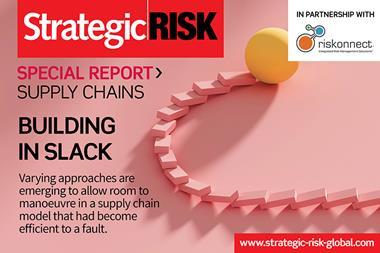One thing risk professionals know only too well is that history has a nasty habit of repeating itself
The column inches are already stacking up on the dramatic bailout of Credit Suisse by UBS. The $3.23 billion rescue of one of the world’s largest banks has done little to quell fears of contagion risk in wider financial markets and comes just a week after the high-profile collapse of US lenders Silicon Valley Bank (SVB) and Signature.
The global pandemic (and lifting of stimulus measures), inflation – fuelled by the war in Ukraine – and interest rate rises are just some reasons financial markets are experiencing volatility, losses and a capital crunch.
Pundits are quick to point to the differences between what is happening now versus the subprime crisis of 2008. But are they so different?
“The speed at which the 167-year-old institution deteriorated, when it was previously deemed too big to fail, has rocked the banking sector,” observes Susannah Streeter, senior investment and markets analyst at Hargreaves Lansdown.
“Bigger lenders are still considered to be much better insulated from the chill winds still blowing through the banking sector,” she adds. ”… But as risk aversion grips the sector, the worry is that overall banks will become more cautious in their lending.”
Ticking time bomb
Back in 2008, a poorly regulated financial system was seemingly blind-sided by the US subprime pyramid scheme.
Banks (and certain insurers) had failed to understand that if you package up hundreds of thousands of worthless mortgages, securitise them into shiny, new financial instruments, hit up your friendly rating agency for a triple-A stamp and flog them on to your investors, it doesn’t stop the system imploding.
One thing risk professionals know only too well is that history has a nasty habit of repeating itself and memories are short.
Whatever your solvency capital requirements or the quick interventions of the central banks, poor risk controls, unlucky timing and just one rogue trader can bring down a giant.
Once panic sets in, the markets react, lenders become more conservative, capital scarcer and more expensive, and the low hanging fruit is the first to fall.
Could it happen again?
With each scandal at Credit Suisse, regulators and litigators cited poor risk controls and substandard cultures and governance. With a balance sheet now twice the size of the Swiss economy, UBS has its work cut out.
As risk managers continue to steer their organisations through a multitude of challenges, it is worth remembering the lessons of the GFC. Diversify your funding options and don’t over-leverage. Have contingencies in place for insolvencies in your supply chain.
Respite is on its way, with inflation set to ease later in the year, but for now you’ll need to steady the course and manage the crunch, if and when it appears.



















1 Readers' comment